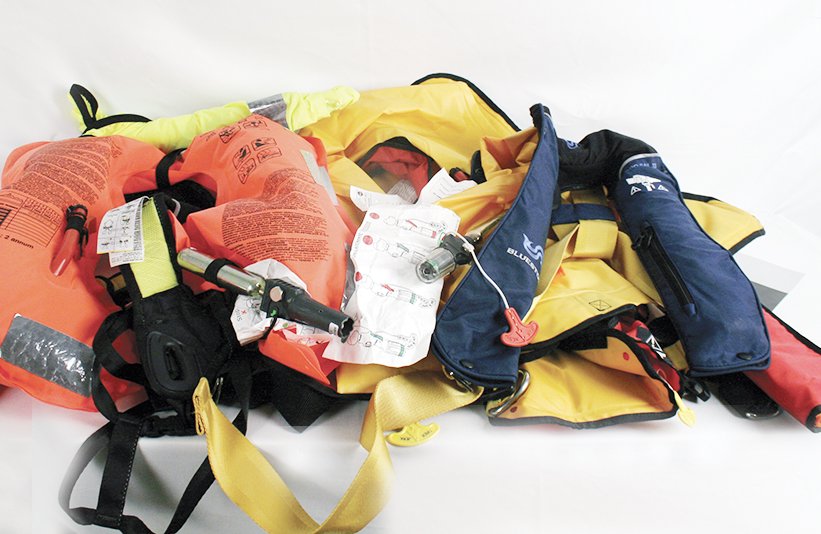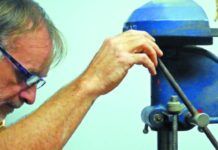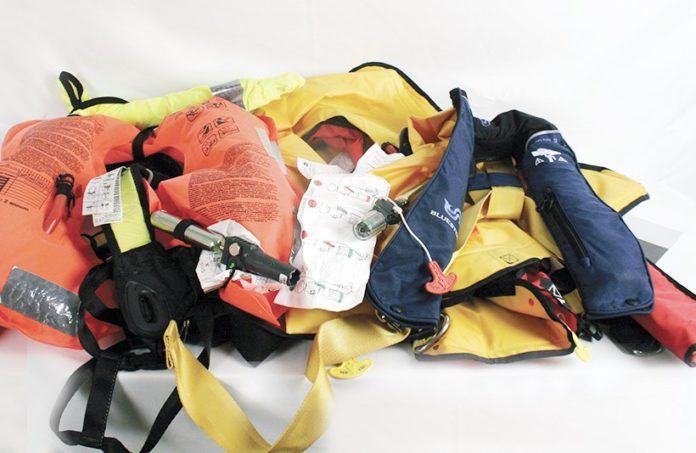Darrell Nicholson

In the wake of the recent fatal accident in the Clipper Around the World Race, we look again at the hard won guidance on inflatable PFD/harnesses. It is not enough to just have these on board. Today’s inflatablePFDs require regular maintenance, special care when re-arming or repacking, and regular testing to confirm that they will work as designed.
1. Always wear your own life jacket. Make sure it is properly fitted, and secured.
2. Life jackets should be either on a person, hooked to their bunk, or otherwise immediately available.
3. Inspect your life jacket every time you put it on and conduct an air test of your inflatable annually.
4. Revisit the decision whether you want to wear an automatic or manual inflating life jacket. Familiarity with using the dump valve on your PFD was emphasized in ourpreliminary study of what can happen in a capsize.
5. Know how to manually inflate your inflatable life jacket. Finding the pull cord is not always easy.
6. Wear crotch/thigh straps, especially when embarking on an offshore passage. Know how to deploy and use your spray hood.
7. Upgrade your whistle. The Fox whistle did best inour emergency whistle test. (Installed PFD whistles were considered useless.)
8. Many PFD strobe light sensors must be in water to work, and they are not very bright. We tested MOB lights 2016.
9. Assess your habits for clipping in. We offered our own recommendations in regarding both PFDs and harnesses inour analysisof the report on the fatal capsize of the racing sloop Wingnuts in 2011.
10. Tether quick-release snap-shackles do not consistently release when the tether is under loads of greater than about 150 pounds. So if you are being dragged behind your boat, you will likely have to cut yourself free, or relieve the strain on the tether with a great deal of arm strength before you can trigger the quick release.
11. Accessing the tethers quick-release mechanism when hooked into inflated harness/PFDs can be extremely difficult. Make sure you can easily release yours.
12. When not in use, boat-end tether clips or clips on two-leg tethers should never be attached to the harness. Only a single quick-release snap-shackle or similar device should be connected to the harness.
13. Auto-inflating harnesses can prevent deaths due to the gasp reflex, in which a drowning victim (typically in cold water) reflexively ingests water, but they have shortcomings, one of which is prevent escape from an overturned vessel or flooded cabin.
14. Know how to deflate your inflatable PFDs. Trying to escape from a sinking or capsized boat, reboarding a boat, or boarding a life raft in an inflated PFD can be extremely difficult.
15. A sharp knife should be kept handy at all times while underway. We’ve tested several knives over the years, some of our favorites are featured in thisPractical Sailor sailing knife test.
16.Personal locator beacons (PLBs), whistles, and lights that are worn at all times can be valuable lifesavers.
Weve carried two major tests of inflatable PFD/harnesses in recent years, with several smaller follow-ups. In 2006, noted offshore sailor Skip Allentested several models in the cold waters of California. And ina followup life-jacket harness testin June 2008 we tested at three fairly new entries to the field, representative of a trend toward light-weight models. Although both of these tests appear fairly old, safety design tends to evolve quite slowly. Most of these products, or near copies are still on the market today.
Maintenance guidelines vary slightly by manufacturer, but the guidelines offered by West Marine in theirdo-it-yourself checklist for inflatable PFD maintenancewill generally apply to other brands.
Mustang, maker of one of our top-rated inflatable PFD harnesses, the 3184, offers its ownMustang step-by-step guide to PFD maintenance.
For those looking for instructions on re-arming their PFD my editorial on theelusive perfect fit featured the following links.
Mustang Automatic MD3053, MD3054, MD3083, 3084
Landfall Navigation, one of the leading providers of safety equipment, also offers a number of useful videos and links to manuals.
We reported onconcerns raised about the Spinlocks popular (and expensive) low-profile lifejacketsin the aftermath of an accident in 2012.
We looked at the Spinlock along with some moreconventional non-inflatable PFDs in 2013.
If you’ve yet to rig jackstays for clipping in on your boat, then you’ll want to check out the May 2017 issue of Practical Sailor, which offers new guidance on routing jackstays on monohulls and multihulls.



































